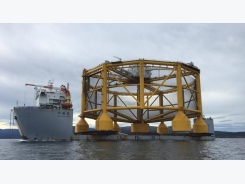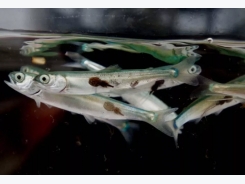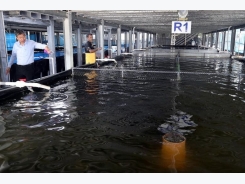Giant ocean fish farms to solve food security? Theres a catch

Some species cope better in crowded pens than others BORIS HORVAT/AFP/Getty Images
Despite decades of overfishing, we’re now eating twice as much fish as we were 50 years ago. While this growing appetite for seafood is good for our health, it’s harming life in the oceans. Almost 60 per cent of global fish stocks are exploited to full capacity and 30 per cent are virtually tapped out.
By 2050, with a predicted human population of around 10 billion and climate change shrinking fish populations at a rate of 20 to 30 per cent for every 1°C rise in sea temperature, we may be seeking novel protein sources.
But fear not. A solution could be in sight, say researchers who have totted up the area of ocean suitable for aquaculture. The study, led by Rebecca Gentry of the University of California, Santa Barbara, identified areas up to 200 metres deep that are right for farming fish and shellfish, but currently unexploited. They amounted to more than 11 million square kilometres, and did not include areas already used for other purposes, such as shipping, oil exploration or conservation.
How can we feed the world substainably? Find out in our expert talk at New Scientist Live
We would only need to farm only a tiny fraction of the space identified – no larger than Lake Michigan – to match current landings from wild-caught fisheries, the team says. Better still, if we used all ocean space suitable for aquaculture, we could produce as much as 15 billion tonnes of fish annually. That’s 100 times more than we currently eat each year.
All of this suggests we could farm our way out of the fisheries crisis and possibly global food security issues. Already more than half of the fish we eat are raised rather than wild-caught and fish production is growing faster than that of chicken, pork or beef. People want to eat more seafood, and we seem to have plentiful space to farm it. It sounds so simple – except that it’s not.
For starters, not all suitable areas will become fish farms for many reasons, such as worries about habitat damage or local opposition to processing plants. Then there’s the bigger problem of unintended effects. Rather than saving wild fisheries, aquaculture can denigrate them further by spreading disease and pollution, not to mention the senseless practice of using small wild fish as feed for larger farmed fish. Efforts to develop alternative crop-based feeds are gathering pace, but they would add to pressure on farm land.
A lesser worry is that we’ll end up with a restricted menu of delicacies. Raising species such as mussels and oysters seems the obvious choice, as they extract their own food from the sea, but this suggests a less diverse future.
What’s more, the reality of farming is that some species take to it better than others. Salmon, for example, cope well with the crowded conditions of pens whereas other favourites like cod are less resilient to problems of captivity such as sea lice.
There’s also the fact that warm waters are the most productive – many of the regions the study identified as suitable for farming are tropical. Herring need not apply.
Knowing that we have all the space we need to grow aquaculture well beyond our current needs offers some comfort. But there are plenty of caveats. And if we continue feasting on wild-caught fish with reckless abandon, we may soon have to accept that our diet will change in ways we haven’t anticipated.
About Author:
Olive Heffernan is an environment writer
Related news
Tools

Phối trộn thức ăn chăn nuôi

Pha dung dịch thủy canh

Định mức cho tôm ăn

Phối trộn phân bón NPK

Xác định tỷ lệ tôm sống

Chuyển đổi đơn vị phân bón

Xác định công suất sục khí

Chuyển đổi đơn vị tôm

Tính diện tích nhà kính

Tính thể tích ao




 Fish Vet Group Asia relocates to the heart…
Fish Vet Group Asia relocates to the heart…  Multi-storey fish farms could boost local yields
Multi-storey fish farms could boost local yields